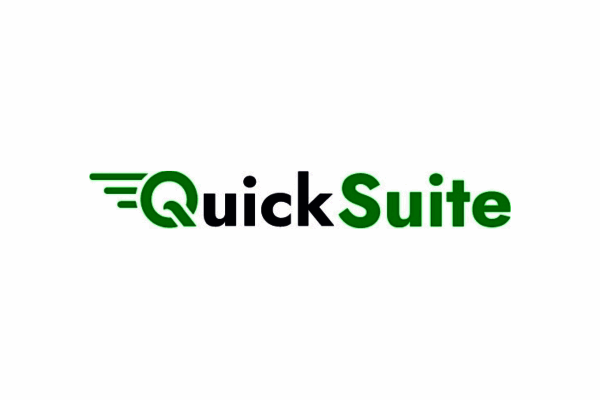Description

Frontegg

QuickSuite
Comprehensive Overview: Frontegg vs QuickSuite
Frontegg and QuickSuite are both products designed to enhance business operations by providing cloud-based solutions, but they serve different functions and target markets.
a) Primary Functions and Target Markets
Frontegg:
- Primary Functions: Frontegg is a user management platform designed for SaaS (Software as a Service) applications. It focuses on providing extensive authentication, authorization, and user management capabilities. Some of its features include user provisioning, single sign-on (SSO), passwordless login, multi-factor authentication, and user activity tracking.
- Target Markets: The target market for Frontegg includes tech companies developing SaaS applications, particularly startups and mid-sized enterprises looking to implement a robust user management system without building it from scratch. It appeals to companies that prioritize user experience and security in their applications.
QuickSuite:
- Primary Functions: QuickSuite offers a range of business productivity tools that include project management, collaboration, document management, and CRM (Customer Relationship Management). It is designed to integrate various business functions into a cohesive ecosystem.
- Target Markets: QuickSuite targets small to medium-sized businesses (SMBs) and enterprises looking for an all-in-one platform to streamline their operations and improve efficiency. It's ideal for businesses that require a scalable solution for managing projects, resources, and customer relationships.
b) Comparison in Terms of Market Share and User Base
Frontegg:
- As a relatively specialized platform focusing on SaaS infrastructure services, Frontegg's market share is smaller but concentrated within the tech industry. Its user base consists mainly of SaaS providers who need sophisticated user management systems.
- The market growth trajectory for Frontegg is positive, with increasing demand for user management solutions due to the proliferation of SaaS applications and a growing emphasis on cybersecurity.
QuickSuite:
- QuickSuite has a broader market reach due to its comprehensive suite of business applications that appeal to various industries. Its market share is larger in comparison to Frontegg, primarily because it serves multiple business functions across different sectors.
- The user base includes a diverse range of businesses from SMBs to larger enterprises globally, allowing for a more widespread adoption.
c) Key Differentiating Factors
Frontegg:
- Specialization: Frontegg is highly specialized in user management systems for SaaS applications, offering features that are specifically tailored to enhance user authentication and security.
- Integrations and APIs: It provides developers with extensive APIs and SDKs for easy integration into existing applications, making it highly adaptable to various tech stacks.
- Focus on Security: Frontegg places a strong emphasis on security features and compliance, which is critical for companies handling sensitive user data.
QuickSuite:
- Comprehensiveness: QuickSuite offers a wide range of business applications in one platform, providing businesses with a holistic solution for various operational needs.
- Ease of Use: The platform is designed for user-friendliness and simplicity, making it accessible even for businesses without extensive IT resources.
- Scalability: QuickSuite provides solutions that can scale with a company's growth, easy customization, and the ability to add or remove functionalities as needed.
In conclusion, Frontegg and QuickSuite cater to different segments of the market, with Frontegg focusing on SaaS application developers requiring advanced user management solutions, while QuickSuite serves businesses looking for an integrated suite of productivity and management tools. Their market share and user bases reflect these distinctions, with Frontegg being more niche and QuickSuite having a broader appeal.
Contact Info

Year founded :
2019
+1 234-567-8992
Not Available
United States
http://www.linkedin.com/company/frontegg

Year founded :
2020
Not Available
Not Available
Singapore
http://www.linkedin.com/company/quicksuite
Feature Similarity Breakdown: Frontegg, QuickSuite
To provide a comprehensive feature similarity breakdown between Frontegg and QuickSuite, let's examine the commonalities, differences, and unique aspects of these two products. While my current data might not encompass all recent updates or changes, I'll provide a baseline comparison based on common shared and unique elements.
a) Core Features in Common
-
User Authentication: Both platforms offer robust solutions for user authentication. This includes support for multi-factor authentication (MFA), single sign-on (SSO), and integration with various identity providers.
-
User Management: Frontegg and QuickSuite provide capabilities for user management, allowing admins to create, update, and delete user accounts, manage roles and permissions, and track user activity.
-
APIs and Integrations: Both products support extensive APIs and third-party integrations, enabling seamless connectivity with other tools and services commonly used by businesses.
-
Security and Compliance: Security is a key feature; both solutions adhere to compliance standards and implement best practices to protect user data and ensure data privacy.
b) User Interface Comparison
-
Frontegg: Frontegg typically offers a modern and intuitive UI, designed to be user-friendly for developers and admins alike. It integrates well within existing platforms, providing a seamless UI experience that doesn't disrupt the user flow. Frontegg’s dashboards are often reported to be straightforward with easy navigation and configuration settings.
-
QuickSuite: QuickSuite’s UI tends to focus on simplicity and accessibility, catering to a broader range of user profiles, including those who may not be technically inclined. The interface is generally clean, with an emphasis on collaboration and productivity, making it easy for teams to adopt and integrate into their workflows.
c) Unique Features
-
Frontegg:
- Embedded Features: Frontegg is known for its embedded capabilities, allowing you to embed authentication and customer-facing features directly into your product with minimal coding effort.
- Audit Logs: Frontegg provides detailed audit logs, enabling businesses to monitor user activities closely for security purposes and compliance.
-
QuickSuite:
- Collaboration Tools: QuickSuite often includes a suite of integrated collaboration tools that are specifically designed to support team communication, project management, and task assignments.
- Customization Options: It offers a high level of customization, allowing businesses to tailor the suite's features to more closely align with their specific workflows and processes.
By concentrating on these aspects, businesses can better decide which platform meets their needs based on common functionalities, user experience preferences, and unique offerings. Always consider checking the latest documentation and user feedback for the most up-to-date insights.
Features

Not Available

Not Available
Best Fit Use Cases: Frontegg, QuickSuite
When considering Frontegg and QuickSuite, it's important to understand their core functionalities and how they align with specific business needs.
Frontegg
Frontegg is a platform specializing in user management infrastructure for B2B applications. It provides features such as authentication, user management, and feature management out of the box, which can significantly accelerate development time and reduce maintenance overhead for SaaS companies.
a) Best Fit Use Cases for Frontegg
-
B2B SaaS Companies: Frontegg is ideally suited for businesses building SaaS products that require robust user management and authentication features. It helps streamline user onboarding, authentication processes, and secure access control.
-
Startups and Growing Enterprises: For companies in the initial stages of product development, Frontegg offers a comprehensive and ready-to-use solution that saves time and resources, allowing teams to focus on core product features.
-
Enterprises with Complex User Management Needs: Companies with complex user roles, permissions, or multi-tenant architectures will benefit from Frontegg’s capabilities in managing these aspects efficiently.
-
Development Teams Seeking to Accelerate Delivery: Teams that wish to avoid building user management from scratch can use Frontegg's pre-built components to quickly implement and maintain secure and scalable user infrastructure.
QuickSuite
QuickSuite refers generally to tools and solutions designed to offer rapid implementation for business processes, often encompassing features that handle operational tasks like CRM, ERP, and other back-office functionalities.
b) Preferred Scenarios for QuickSuite
-
Small to Medium Enterprises (SMEs): QuickSuite is attractive to SMEs that require a comprehensive suite of business operation tools without significant investment in IT infrastructure or prolonged deployment times.
-
Businesses Needing Integrative Back-Office Solutions: Organizations looking to streamline and automate their back-office operations, such as accounting, sales, and customer relationship management, would benefit from QuickSuite’s functionality.
-
Industries with Standardized Processes: Industries where business processes are fairly standard and don’t require heavy customization can leverage QuickSuite effectively to manage operations efficiently.
-
Project-Based Organizations: QuickSuite can be useful for companies that are project-oriented, needing tools that support project management, budgeting, and reporting.
d) Catering to Different Industry Verticals or Company Sizes
-
Industry Verticals:
- Frontegg is particularly well-suited to tech companies in sectors like enterprise software, SaaS, cybersecurity, and finance that need comprehensive user management features.
- QuickSuite serves industries such as retail, manufacturing, and logistics where integrated business management solutions can streamline operations.
-
Company Sizes:
- Small to Medium Businesses: Both Frontegg and QuickSuite offer scalable solutions that fit SMEs, providing the benefits of rapid implementation and cost-effective management.
- Large Enterprises: Larger organizations can use Frontegg to handle complex authentication and user management scenarios, while QuickSuite can integrate diverse business processes across departments for operational efficiency.
Each of these products offers distinct advantages depending on the company's specific needs, industry context, and size, making it essential to evaluate them based on the unique requirements and existing infrastructure of the business or project.
Pricing

Pricing Not Available

Pricing Not Available
Metrics History
Metrics History
Comparing teamSize across companies
Conclusion & Final Verdict: Frontegg vs QuickSuite
To provide a conclusion and final verdict for Frontegg and QuickSuite, we must evaluate these products on several key factors such as features, pricing, scalability, user experience, and support. Here's an overview based on the available information:
Conclusion:
a) Best Overall Value:
The best overall value depends on the specific needs of your organization. If your priority is to have a robust user management solution with authentication features that are developer-friendly and can be seamlessly integrated into your existing systems, Frontegg might offer a better value. On the other hand, if you need a comprehensive business suite that covers a wider range of functionalities beyond just user management, QuickSuite could be more valuable.
b) Pros and Cons:
Frontegg:
-
Pros:
- Specialized Features: Offers strong user management and authentication capabilities.
- Developer-Friendly: Provides APIs and SDKs that simplify integration.
- Security Focused: Regularly updated to include the latest security protocols and compliance measures.
-
Cons:
- Limited to User Management: Primarily focuses on authentication and user management, which might not fulfill broader business needs.
- Complexity for Non-Developers: May require technical expertise to fully utilize all features.
QuickSuite:
-
Pros:
- Comprehensive Suite: Offers a wide range of business applications beyond user management.
- Ease of Use: Generally user-friendly and suitable for businesses without extensive technical resources.
- Integration Capabilities: Often comes with pre-built integrations for various business software.
-
Cons:
- Generic User Management: May not offer as advanced user authentication features as specialized tools like Frontegg.
- Potential Bloat: The multitude of features may be overwhelming if only specific functionalities are needed.
c) Specific Recommendations:
-
For Businesses Needing Advanced User Management: If your primary requirement involves complex user management and security features, and you have the technical resources to integrate and manage these, Frontegg is recommended. It’s particularly well-suited for software companies that need to prioritize flexible, scalable, and secure user management.
-
For Companies Seeking a Broader Business Suite: If your needs encompass more than user management and you are looking for a well-rounded suite of business tools that cover multiple areas such as CRM, project management, and communication, QuickSuite might be the better option. It’s ideal for small to medium-sized enterprises looking for an all-in-one solution without deep specialization.
In deciding between Frontegg vs QuickSuite, organizations should assess their specific needs, the complexity of deployment they are prepared to handle, and the breadth of features required beyond user management. Pilot testing both platforms, if possible, can also provide practical insights into which product aligns better with your organizational goals.
Add to compare
Add similar companies




